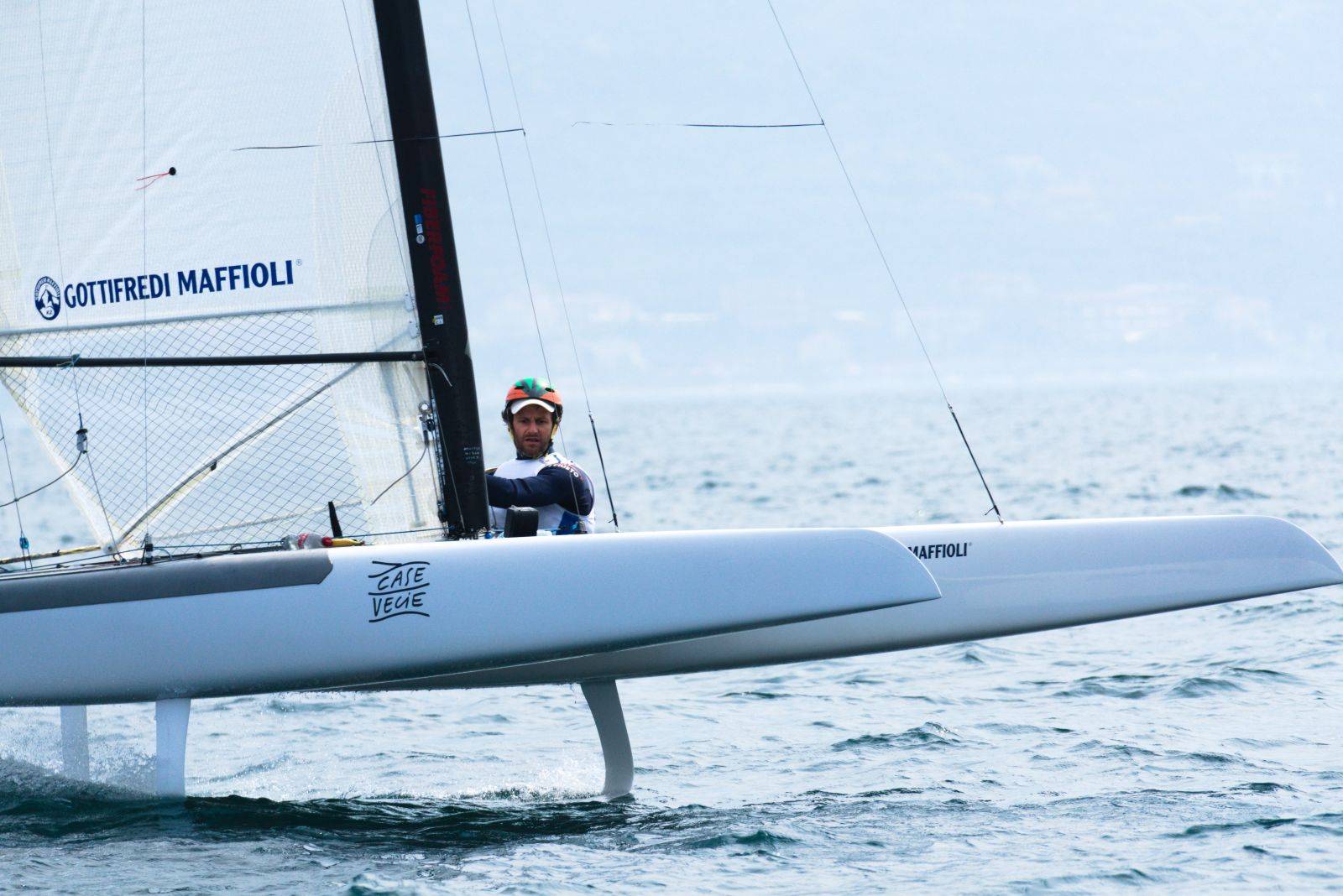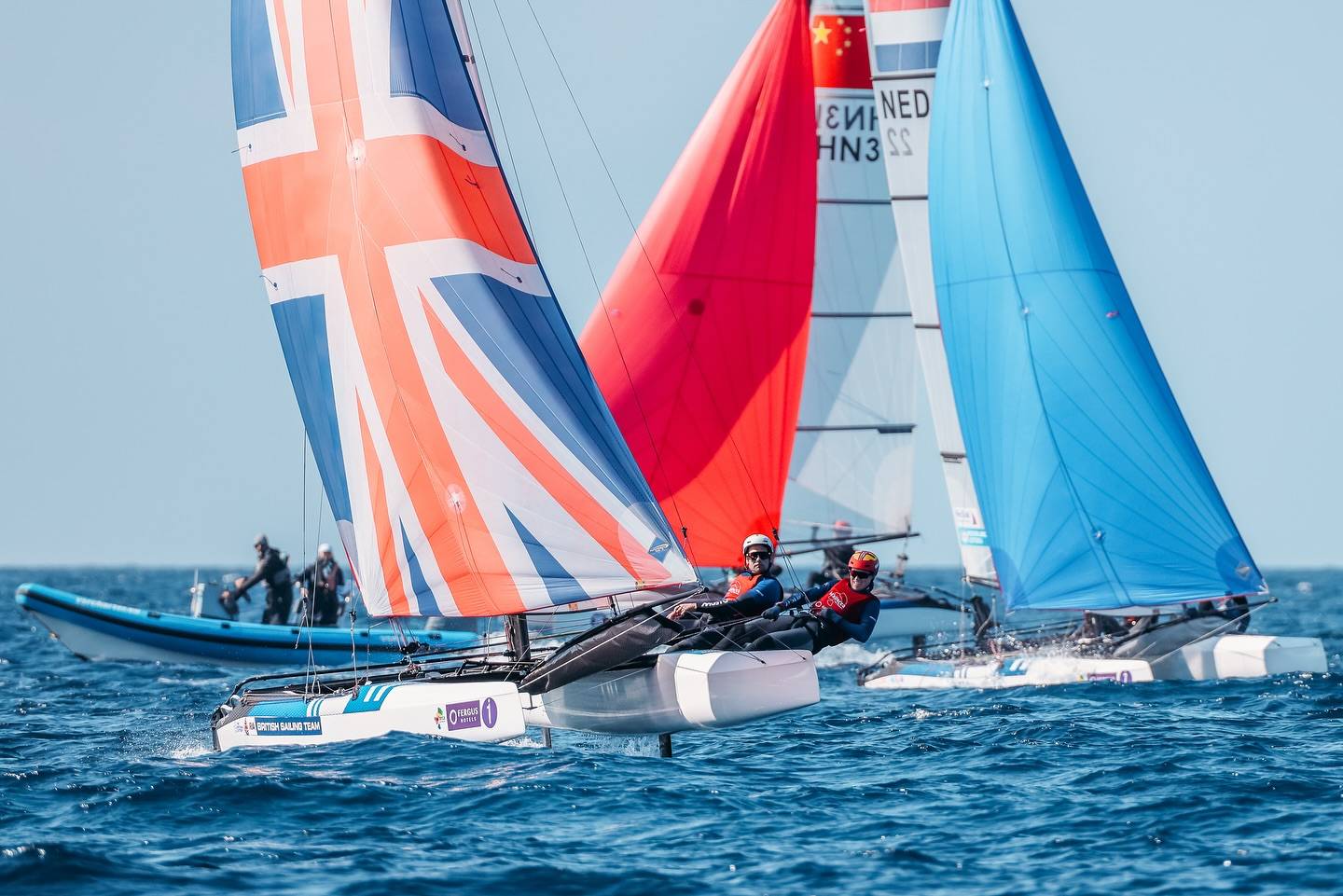Marstrom 20: Curved Upgrade for usa1
 Bret Moss and John Casey won the Steeplechase Long Distance Race. Curved boards are making their way as a default feature for high performance cats.
Bret Moss and John Casey won the Steeplechase Long Distance Race. Curved boards are making their way as a default feature for high performance cats.
Below feedback sent by Marstrom staff on Bret’s M20, now equipped with curved boards. More on JC’s web www.johncaseyworldwide.com
—–
What’s your general feeling of the M-20 design
Bret: The M-20 has shown to be a very capable platform in a variety of conditions. Forward reserve buoyancy is always good to have, and the increased stiffness gives good feedback to the helm.
John: Light, stiff and durable. Moving the M20 around on the beach is unbelievably easy due to its weight. However, when I started sailing the boat the stiffness is most impressive. Racking is the biggest problem with modern beachcat designs, but with the M20, the bows stay locked in and there is no twisting of the platform. Extremely light yet extremely stiff. I think you can’t go wrong with that! The platform materials are so dense and stiff that I could not only hear the waves hitting the hull, but felt them in my feet!
The fact that the M20 floats above the water instead of trying to penetrate the water makes a difference in keeping the boat in the groove. The M20 likes to turn on the foil. In most newer designs the bow goes too deep in the water and the hull wants to drive straight instead of allowing the driver to turn the boat to achieve proper sailing angle. This difference is very noticeable in the design.
You have sailed the M-20 both with the straight boards and then changed to the curved foils. Can you please tell us the effect of the change
John: Stability. When we sailed the boat on it’s lines the fore/aft pitching was very much less than with the straight boards. I would equate the feel to a luxury car ride with a Ferrari engine. The platform has more acceleration with less heel than the straight boards. The hull rises out of the water with less wind, but it slowly flies to a certain height and is easy to control with much more response to cunningham and sail trim. The boat doesn’t ‘trip’ over the foil nearly as much.
Downwind, when the power comes into the boat, since there is less pitching, the boat stays on it’s lines instead of the bow sticking into the water. It is easier to get into the proper sailing angle, which equates to less rudder movement which equals more speed and a deeper angle. Even though the original design has plenty of forward buoyancy, the curved foils give an effect in this aspect as well.
The biggest difference in sailing the boat with the curved foils is balancing the forces on the foil. With straight foils the boat is sailed in a more bow down configuration, but with the curved foils we sailed the boat at the proper angle for the horizontal part of the foil to achieve the most lift with the least amount of drag.
Bret: The M-20 was always fun to sail , but the curved foils have made the boat really come on balance. There is the effect of minimized surface to hull reaction, as some load is now carried on the foils. An added positive effect is the boat steers a little easier and the sweet spot range is improved. The new foils allow us to clear weeds while still staying strapped in to the pressure.
We also like the look very cool after years of straight boards.
——–

























I just heard that my great sailing friend and former CEO of Hobiecat Europe has passed. May The endless oceans…
...Report was sent by an F18 Sailor, if you want Hobies reported send your own, we'll publish as usual. Cheers.
Looks like in your report the Hobies are not really present. Suggest to rewrite the article.
Thanks for the great report Wik. Great battle.
If I correctly read the results the overall winner this year is a Hobie16